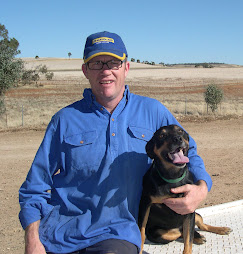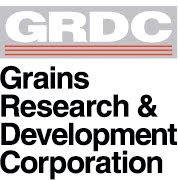57 A-side Dairy
Mark Vander Dussen was our last stop for the day. He runs a 6000 milking cow dairy. As with the other dairies that we had visited in the USA, Mark’s cows were all housed in feedlots. He milks the 6000 cows in a 57 a side dairy.Mark along with 55 staff run the dairy and all of it various enterprises. Each enterprise is run by a manager with support staff beneath them. The farm is set up 2500 acres. The arable group look after all the paddock work and supply all of the hay, grain and silage for the feedlot. There is a group catering to all of the needs of the cow’s nutrition and the calves once born and removed in the first day. They also do custom calf rearing for other farmers in the area. The breeding program is all done in the feedlot with the breeding manager who works with Mark to set the future of the herd.
The Cows Are Fed a TMR in the Feedlot
The farm works on a 30% replacement in the herd. 30 - 40 calves are born each day. They currently have 3000 calves on the place. They sell the non required heifers to other farmers. All of the bull calves are grown out to 150 kg’s and then sold onto a feedlot.
Calf Pens
The cows were all in very good condition. The feeding and management program was doing an excellent job to keep the cows in good shape and achieve good milk numbers and a calving interval of 12.8 – 13 months.
Currently they are being paid $12 / 100 lbs (44kgs). This is too close to the cost of production as Mark said that they are not as efficient as Aussie or Kiwi farmers. The main problem with his current situation is the better priced product, fresh milk only 15% and 85% for cheese and milk powder which give lower returns. Also the value of wages and inputs are steadily climbing If the return gets to $10 / 100 lbs (44 kg’s) he will shut up shop.
University of California Davis
An interesting visit was to UC Davis. Davis is called a land grant uni. This was put in place by Abraham Lincoln after the Civil War. He knew that the country had exhausted their food supplies and they were going to need more food to feed the expanding nation. He grant national land to set up universities across the county to teach people to become farmers and better educate those who were already farmers.
We had a number of meetings with researchers and scientists. Dr James Oltjen works with a lot of cow and calf units to maximize production efficiencies. He uses computer modelling with different classes of stock for animal growth and nutrition.
• Beef models of energy systems for laying down fat.
• Dairy models for milk production which is partly based on good liver model.
• Grass fed system models to make more money by conserving fodder.
Another researcher, J Stu Pettygrove was utilizing satellite imagery to be able see the changing levels of soils over time. This can help determinate whether the ground water reserves were being fully recharge or not.
Finally we met someone involved with the aquaculture industry. Fred gave us a run down on the state of California’s industry. It is worth $US 100 million per year. They have grown a number of species including Trout, Telapia & Abalone. They cannot compete with the rest of the US for eating product but do well selling into the live market and for sports fishing.
They currently have some trials working with Sturgeon of the caviar fame. It is showing good potential as they now have been able to get the fish to complete its total life cycle in fresh water tanks. The other enterprise which is going well is Aquaponics where the farmers are using the water recycled through glasshouses with lettuces in hydroponic growth mediums.
Superior Farms
Shane Mackenzie gave us look around the abattoir owned by Superior Farms and their employees. Shane did an “apprenticeship” in Australia at Hyden. He runs the abattoir which kills 1,400 lambs per day. The company at a number of sites slaughters 25 million stock per year with 380 employees. They supply both the East and West Coast.
The key note on the running of the shed is cleanliness, low stress animals and employee motivation.
They go above the standards set in USA, and are very close to ours for cleanliness, something he learnt in Australia. There are no dogs allowed in the loading of dogs on farm and none in the abattoir. They use Judas sheep which are trained to show the way for other animals. They are also trained to do things by whistle.
The Superior Farms have an Employee Share Option Program (ESOP). This is where the employee earns shares in the company over the time spent in the company. They can only access the value after they have worked for 5 years. Then value is given to them in instalments such as our superannuation. The amount of shares you get each year is dependent on the length of time with the company and the job level. Shane said the mainly Mexican work force did not like it nor understand it. Until an employee retired after considerable time and then received his payments now they all love it. They are very well motivated as each person on the lines think of the next person who receives the carcass as a customer, even if they are standing next to each other. They have pride in their work and want to see the company go well. They return early from mishaps and are quite happy to stick labels on packs etc. if they cannot do their normal job yet. It was a very happy workplace and was well run.
Interesting Notes. Shane stated that the cream for their enterprise was selling the offal. If he made his money back for the meat then he could still make reasonable profit from the offal. They have meat inspectors on the line and they remove the head before the inspector views the carcass so they use the calcification of the lower shank joint to class wether it is a lamb of hogget. The carcass sizes they look for is 40kg dressed weight. Their size made them look more like pigs than lambs and they have very limited fat deposition.









No comments:
Post a Comment